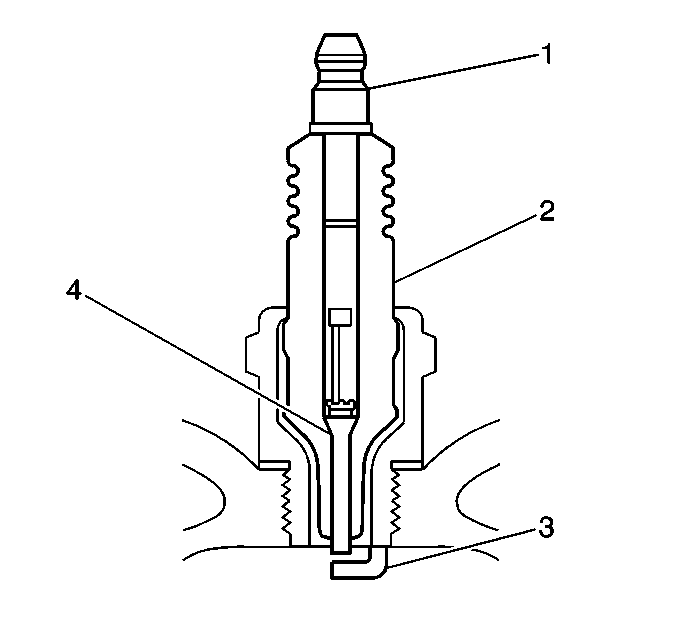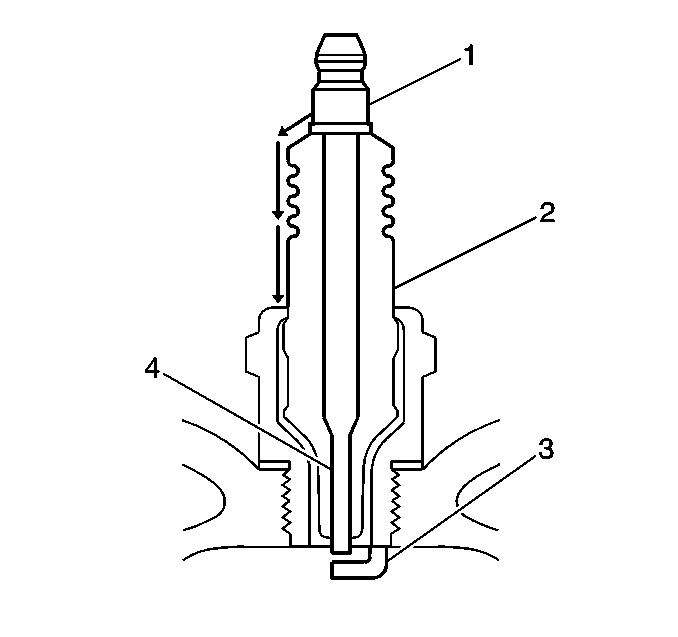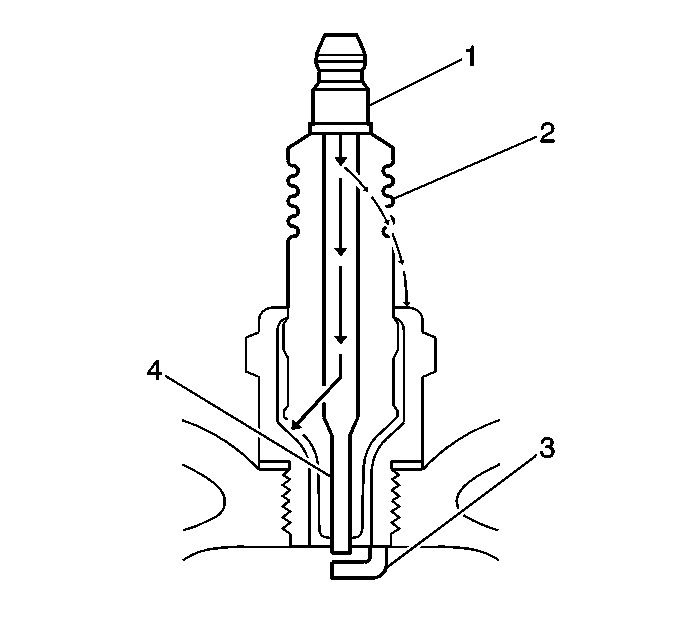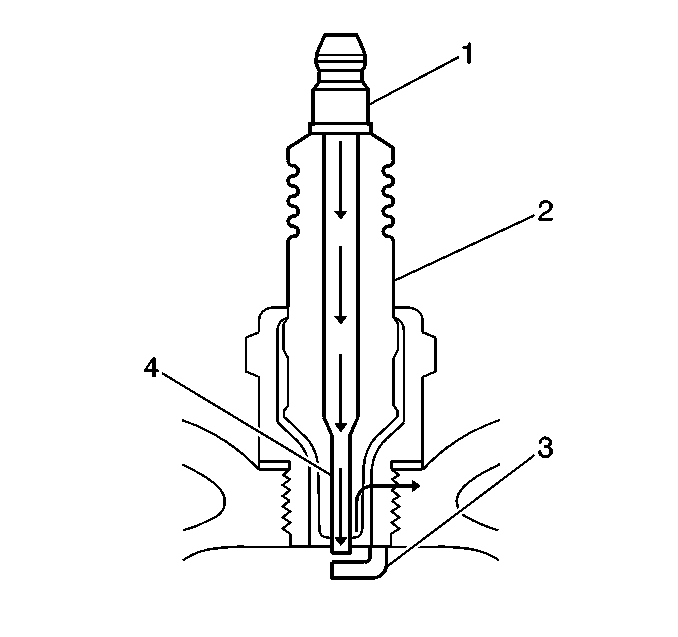For 1990-2009 cars only
Spark Plug Usage
| • |
| • |
| - | Spark plug fouling-Colder plug |
| - | Pre-ignition causing spark plug and/or engine damage-Hotter plug |
Spark Plug Inspection
| • |

|
| - | Inspect for a bent or broken terminal post (1). |
| - | Test for a loose terminal post (1) by twisting and pulling the post. The terminal post (1) should NOT move. |
| • |

|
| - | Inspect the spark plug boot for damage. |
| - | Inspect the spark plug recess area of the cylinder head for moisture, such as oil, coolant, or water. A spark plug boot that is saturated causes arcing to ground. |
| • |

|
| • |

|
| - | Measure the gap between the center electrode (4) and the side electrode (3) terminals. Refer to Ignition System Specifications . An excessively wide electrode gap can prevent correct spark plug operation. |
| - | Inspect for the correct spark plug torque. Refer to Ignition System Specifications . Insufficient torque can prevent correct spark plug operation. An over torqued spark plug, causes the insulator (2) to crack. |
| - | Inspect for signs of tracking that occurred near the insulator tip instead of the center electrode (4). |
| - | Inspect for a broken or worn side electrode (3). |
| - | Inspect for a broken, worn, or loose center electrode (4) by shaking the spark plug. |
| • | A rattling sound indicates internal damage. |
| • | A loose center electrode (4) reduces the spark intensity. |
| - | Inspect for bridged electrodes (3, 4). Deposits on the electrodes (3, 4) reduce or eliminates the gap. |
| - | Inspect for worn or missing platinum pads on the electrodes (3, 4), if equipped. |
| - | Inspect for excessive fouling. |
| • |
Spark Plug Visual Inspection
| • |
| • |
| - | Rich fuel mixtures |
| • | Leaking fuel injectors |
| • | Excessive fuel pressure |
| • | Restricted air filter element |
| • | Incorrect combustion |
| - | Reduced ignition system voltage output |
| • | Weak coils |
| • | Worn ignition wires |
| • | Incorrect spark plug gap |
| - | Excessive idling or slow speeds under light loads can keep spark plug temperatures so low that normal combustion deposits may not burn off. |
| • |
